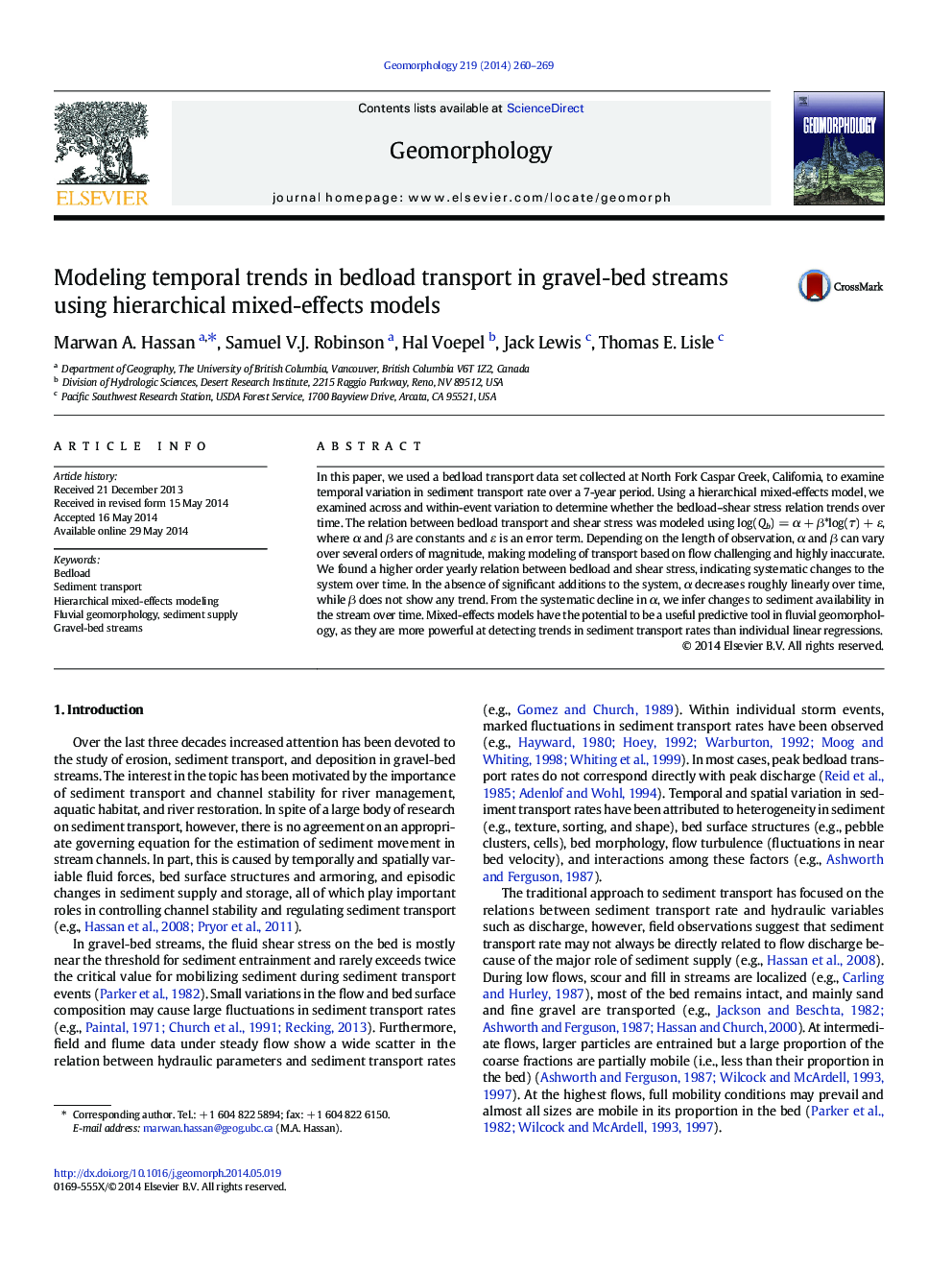| Article ID | Journal | Published Year | Pages | File Type |
|---|---|---|---|---|
| 6432476 | Geomorphology | 2014 | 10 Pages |
â¢We use hierarchical mixed effects to model bedload transport in streams.â¢We found that sediment storage decreases over time.â¢Mixed effect models are useful predictive tools in fluvial morphology.
In this paper, we used a bedload transport data set collected at North Fork Caspar Creek, California, to examine temporal variation in sediment transport rate over a 7-year period. Using a hierarchical mixed-effects model, we examined across and within-event variation to determine whether the bedload-shear stress relation trends over time. The relation between bedload transport and shear stress was modeled using log(Qb) = α + β*log(Ï) + ε, where α and β are constants and ε is an error term. Depending on the length of observation, α and β can vary over several orders of magnitude, making modeling of transport based on flow challenging and highly inaccurate. We found a higher order yearly relation between bedload and shear stress, indicating systematic changes to the system over time. In the absence of significant additions to the system, α decreases roughly linearly over time, while β does not show any trend. From the systematic decline in α, we infer changes to sediment availability in the stream over time. Mixed-effects models have the potential to be a useful predictive tool in fluvial geomorphology, as they are more powerful at detecting trends in sediment transport rates than individual linear regressions.
